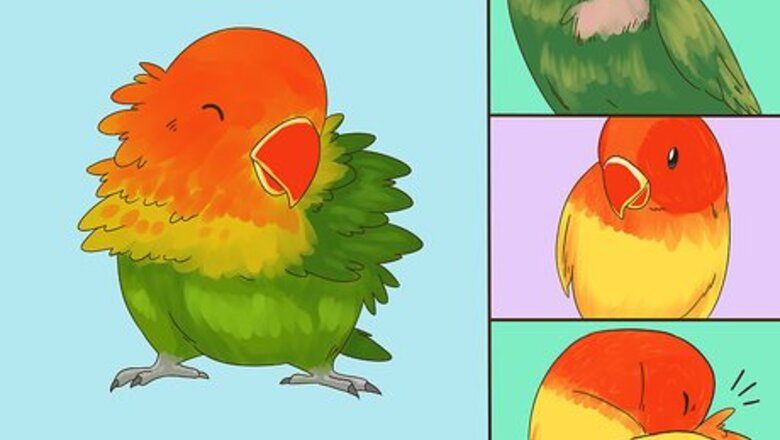
views
Finding Physical Symptoms
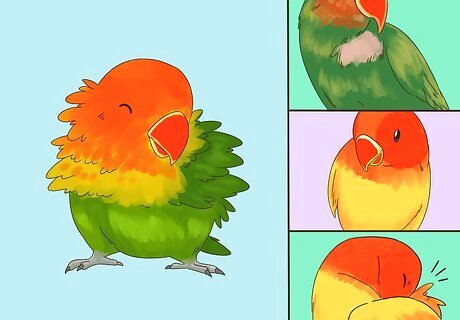
Look for changes in their feathers. Feathers are often a conspicuous sign of illness in birds. Not preening, having consistently ruffled feathers, areas with thin or no feathers, matted feathers, excessive molting, rapid changes in color, and picking out feathers can all be signs of illness in lovebirds. Any of these symptoms individually is concerning. If you notice even one of these, contact your avian vet immediately. Consistently puffed up feathers, combined with lethargy, is usually the first sign of illness in a lovebird. If you notice these symptoms, take your bird to the vet immediately.
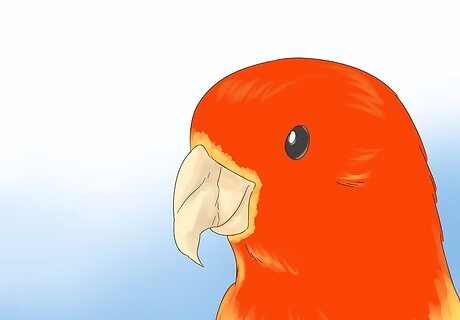
Check their beak. Problems with the beak can indicate any number of problems, including the critical Psittacine Beak and Feather Disease (PBFD). Check to see if the beak is overgrown, flaky, discolored, loses symmetry, or if there is discharge around the nares (the nostril-like openings on the beak). If you suspect your bird may have PBFD, isolate them from any other birds immediately and make an appointment with your vet, as this disease is highly contagious. Sick birds and new birds should always be quarantined away from other birds.
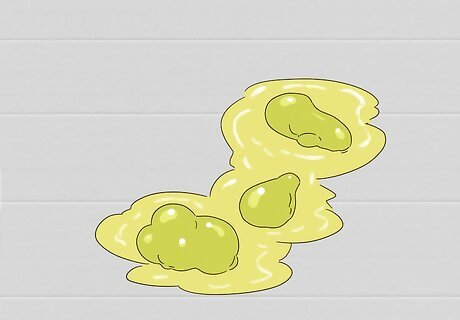
Monitor their droppings for texture and discoloration. Abnormal droppings could be signs of a serious illness, including PBFD and Chlamydiosis. Look for discoloration in droppings, especially green or yellow colors, an abnormally thick or runny consistency, and a major increase or decrease in the number of daily droppings.
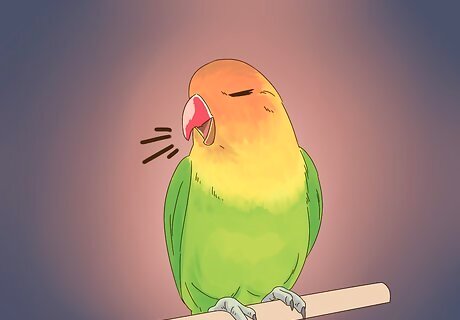
Watch them to see if their breathing is labored. Respiratory illnesses are one of the more common problems in lovebirds, so you need to watch their breathing carefully when you check for signs of illness. Difficulty breathing, breathing through an open beak, wheezing, trouble breathing while flying, and sneezing could all indicate respiratory problems, a serious sign of illness. Difficulty breathing is a critical symptom in most birds. If you notice any respiratory symptoms contact your avian vet immediately or take your lovebird to your closest animal hospital.
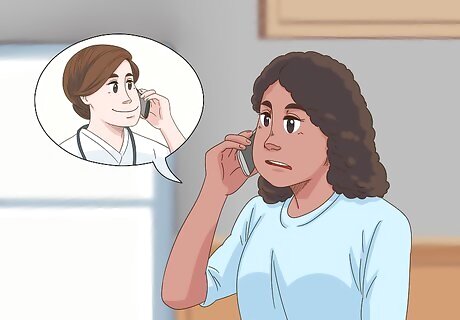
Seek immediate attention for injuries or critical symptoms. If you notice any burns, bite wounds, bleeding, vomiting, seizures, rapid weight loss, lumps or swelling in the body or on the feet, consistent tail bobbing, or if your bird falls off its perch, seek immediate vet attention. These are critical symptoms that indicate that your bird needs immediate medical attention.
Noticing Behavioral Symptoms
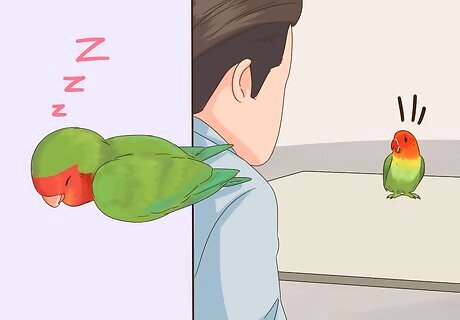
Watch for changes in your bird’s attitude. Just like people, lovebirds can get depressed or anxious when they don’t feel well. If your bird seems withdrawn, shows little interest in fly time, sleeps a lot, or gets overly nervous or excited when someone enters the room, it could be a sign that they feel sick.
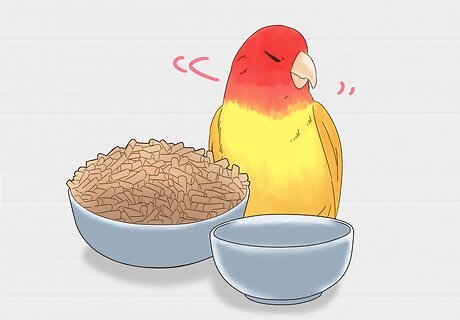
Monitor the amount of food and water they consume. Both a decrease or a sudden increase in thirst or appetite could be signs that your bird is sick, and may be indicators of nutritional disorders, a common problem in lovebirds. Pay close attention to how much your lovebird eats and drinks on a daily basis. If you notice a sudden change, contact your vet for recommendation on treatment.
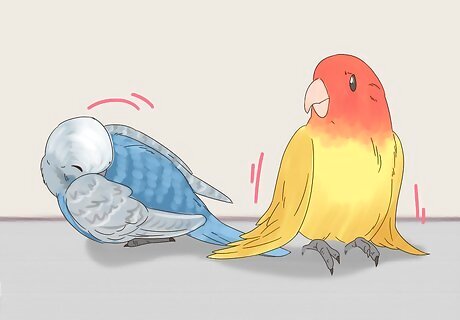
Check for changes in their posture and positioning. If your bird has drooping wings, frequently tucks their head, or huddles instead of standing tall, it could be a sign that they don’t feel well. Behavioral symptoms such as these are typically considered critical, and require a vet visit immediately.
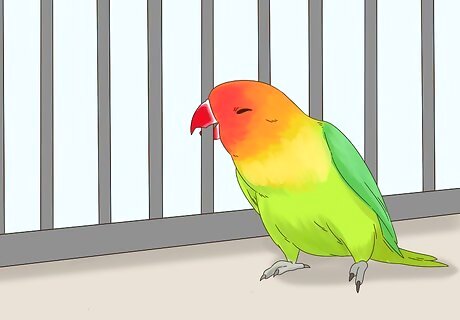
Look at where they are in their cage. Sitting on the cage floor or holding onto the cage with their beak instead of sitting comfortably on a perch are two major indicators that something is wrong. If your bird is unable to perch normally, contact an avian vet immediately for recommendations and to see if an appointment may be necessary. If you notice this behavior in your bird, then you need to contact a vet about an emergency visit. Your bird needs immediate care.
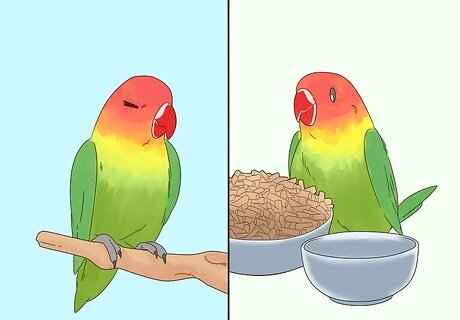
Track their movements. When a bird doesn’t move around much in its cage, it can be an indicator of stress or a larger health problem. If you notice your bird staying on a single perch or sitting for long periods at their food or water dish, they may be exhibiting symptoms of a serious illness.
Caring for a Sick Lovebird
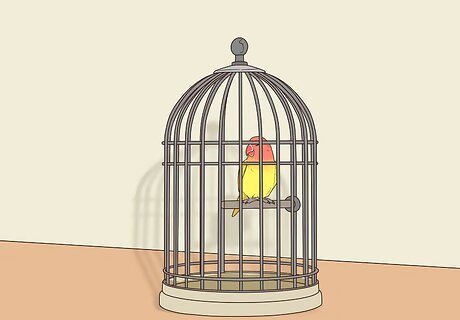
Isolate the bird. If you have multiple birds, it is best to move a bird that isn’t feeling well into another cage in a different room. This helps reduce stress for your sick bird, and helps stop contagious diseases from spreading to your healthy birds.

Take your bird to an avian vet. Sick birds need special care from a vet that focuses on treating birds, commonly called an avian vet. If you think your lovebird may be sick, call your local avian vet immediately to make an appointment. If you think your bird is critically sick, ask for recommendations for an emergency animal hospital if your vet can’t see you immediately. Ask the vet about what steps and precautions you should take with the bird for the time in between your call and your appointment. You can search for an avian vet by visiting https://www.aav.org/.
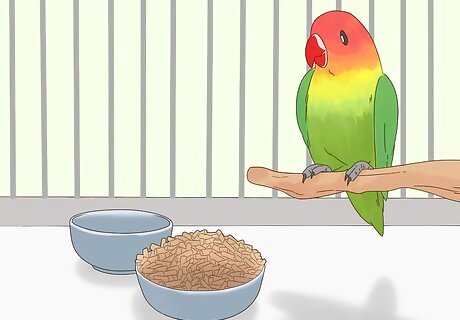
Reduce stress around the bird. Stress can cause the onset or worsening of some diseases in birds. Reduce stress by keeping perches low, making sure food and water are easy to reach, minimizing handling, and allowing a quiet space for your bird to rest.
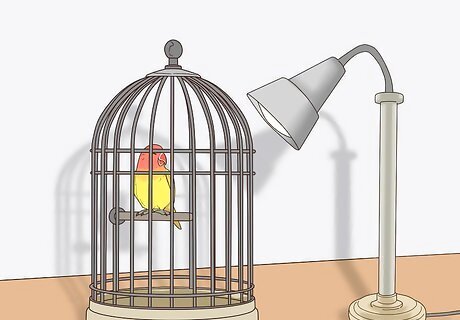
Provide supplemental heat. Supplemental heat is necessary as birds lose body heat rapidly when sick. Use a heat lamp to provide your bird with an environment around 80° to 85° F (26°-29° C). Natural sunlight is also important to help ward off vitamin D deficiencies. Place your bird in an area with access to natural light, or use full-spectrum lamps to provide the UVA and UVB rays they need.
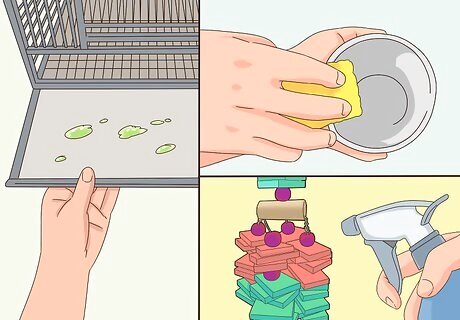
Clean their cages daily. Help eliminate bacteria that can grow in dirty cages by removing old cage liner or paper and rinsing out food and water dishes with soap and hot water daily. Additionally, the cage and all toys, dishes, and accessories should be disinfected using a bird-safe disinfectant once a week. Remember to allow the disinfectant to dry completely before rinsing it away with hot water. The cage and equipment should then be allowed to dry again before returning your lovebird to its home.



















Comments
0 comment